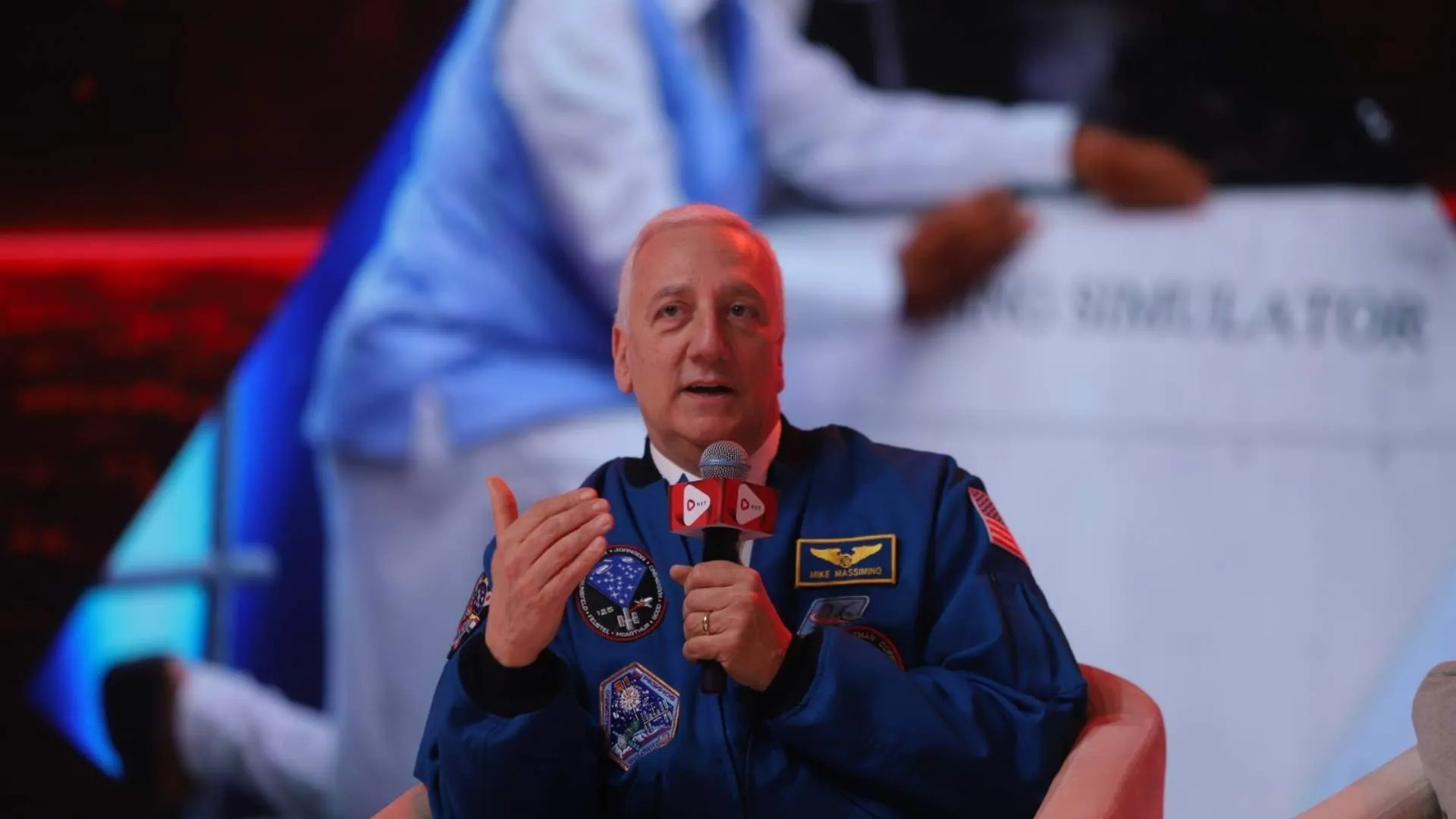NASA astronaut Dr. Mike Massimino at the NXT Conclave in New Delhi expressed optimism on the possibility of humanity becoming an interplanetary species. “Absolutely,” he said. “We’re not going back to the Moon just for a visit — we’re going to settle there. The Moon will be the launchpad to go further to Mars and other planets.”
He noted the rise of private space companies alongside government agencies as a key factor driving this vision. “It’s not just governments anymore — it’s also companies with ingenuity and commercial capabilities. With so many people involved, we really stand a chance.”
A Magical Journey
“It’s magical,” said Dr. Massimino, reflecting on his two space missions to the Hubble Space Telescope aboard the Space Shuttle. “It’s interesting because it’s a bit stressful — you’re doing your job, whatever that might be on your mission. But at the same time, it’s just magical to be up there.”
His missions to repair and upgrade the Hubble Space Telescope were not only technically demanding but also carried the weight of responsibility. “Our job was to treat it as best as we could to improve it, so scientists could use it to make great discoveries,” he said.
Despite the high-stakes nature of the mission, the camaraderie and teamwork between the crew, ground control, and scientists worldwide left a lasting impression on him. However, it was the view of Earth from space that profoundly shaped his worldview. “I felt like I had been to India before because I had seen it so often from space,” he shared, expressing his deep admiration for the beauty of the planet.
A Changed Perspective on Humanity
When asked if seeing Earth from space changed his perspective on life, Dr. Massimino did not hesitate. “It really did,” he said, recalling a pivotal moment during his second spacewalk. “I had a few moments to just enjoy the view, and I thought, ‘This is what Heaven must look like.'”
The sight of Earth’s thin blue atmosphere against the vastness of space made him realize the planet’s fragility. “If you think of the Earth as an onion, the top thin layer of the onion is the size relationship of our atmosphere to the rest of the planet,” he explained. “It’s a very special place, and we need to take care of it.”
Dr. Massimino emphasized that the perspective gained in space can be applied to life on Earth. “We need to try to be amazed every day that we spend here on Earth,” he said.
Mike Massimino: From Engineer to Astronaut
Reflecting on his transition from engineer to astronaut, Dr. Massimino attributed his success to his technical background and problem-solving skills. “Each one of those skill sets — engineering, science, aviation — prepares you to solve problems,” he said. “NASA trains you to apply what you know to the problems you’re going to be working on in space.”
He encouraged young entrepreneurs to pursue their passions and surround themselves with talented teams. “There are so many great young people passionate about space exploration,” he said. “If I were an entrepreneur, I would try to attract as much talent as I could and pick an area I’m passionate about. Passion will help you persevere through the bumps in the road.”
Mike Massimino On India’s Growing Role in Space Exploration
Dr. Massimino acknowledged India’s increasing contribution to space exploration, especially with the success of Chandrayaan missions. “India’s accomplishment with the Chandrayaan lander on the moon is a precursor to sending people there,” he said. “It’s a harsh environment, but finding resources like water and supporting life there will be critical.”
He highlighted opportunities for innovation in satellite communications, human life support systems, and radiation protection as key areas for India’s private space companies.
Dreaming Big and Never Giving Up
Dr. Massimino closed the conversation with a philosophical reflection on the importance of dreaming big. “At NASA, we learned that what seems impossible is often just really, really hard,” he said. “The only way something is truly impossible is if you don’t try or if you give up. Surround yourself with a diverse team of thinkers, and don’t give up — that’s how the impossible becomes possible.”























